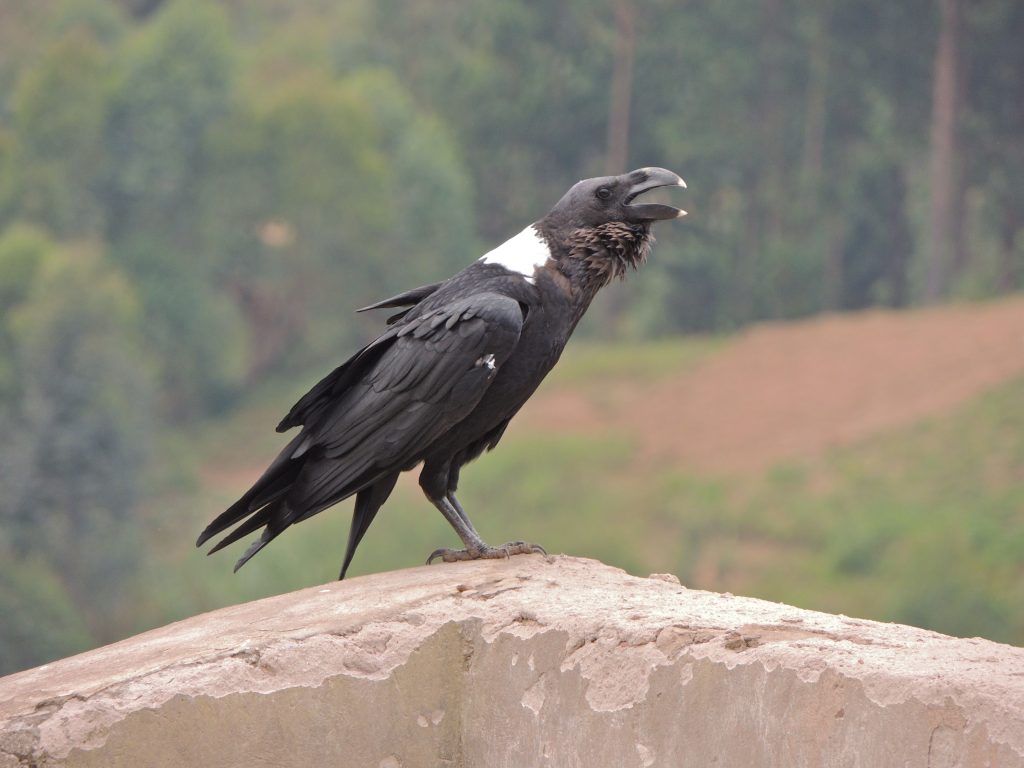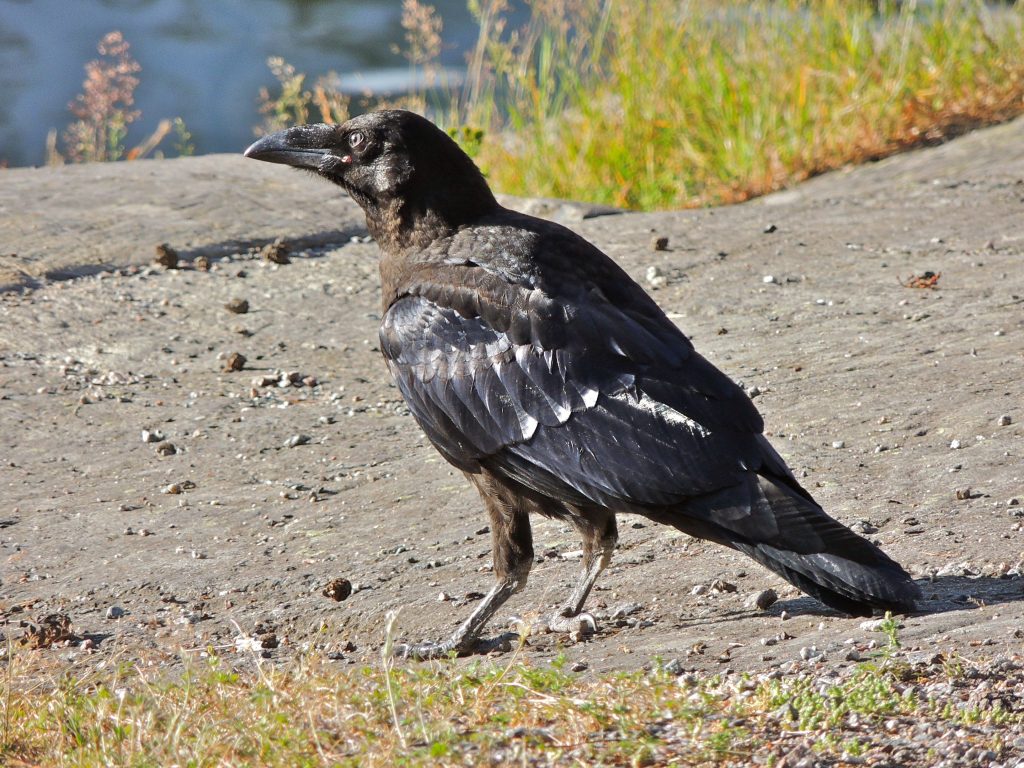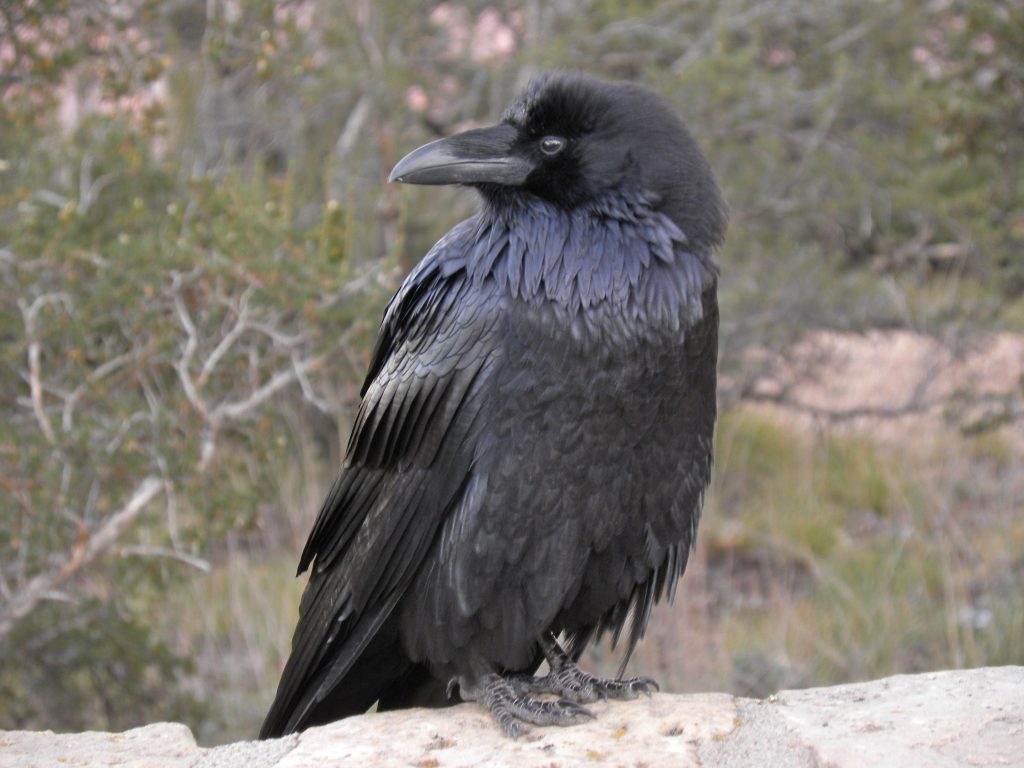January 28 2018. Valley Road Dundas, ON. In need of exercise and because the day dawned bright and mild, I walked a steep and wooded trail this morning. I was more focused on the treacherous footing than anything else but it entered my mind that this might be the sort of day to keep a list of birds heard but not seen, easy enough in mid-winter I suppose. Today the list would have been Black-capped Chickadee, White-breasted Nuthatch, Downy and Hairy Woodpeckers and American Crows.
Although spring is three months away the air was warm and I could imagine these woods as they will be a few months from now. It was an enjoyable two hours and made all the more enjoyable by the appearance of two Common Ravens passing overhead. They were calling to each other in a voice I can’t begin to describe, but which Pete Dunne, in his excellent book Pete Dunne’s Essential Field Guide Companion, takes a stab at as follows, “Short, loud, varied and comical. Some vocalizations are loud and harsh; others are low, gurgled or muttered. All have a rough musical finesse that makes crows sound amateurish.”
What’s so special about Common Ravens is that they were anything but common a handful of years ago, indeed they were a rarity in these parts. But over the past two or three years more and more have been reported, it’s as if they’ve made a decision to colonize urban Ontario.
They are birds synonymous with wilder, emptier and more rugged areas than this densely populated realm. I’ve seen or heard Common Ravens in Sweden, Mexico and at the Grand Canyon, Arizona, and in Uganda I met the very similar White-naped Raven, which behaves and sounds very much like the Common Raven – but its malevolent looking Roman-nose bill gives it a distinctly brutish look. Here is an international selection of photos of ravens.



I’m glad they’re around! I’ve only seen them (live) in Nova Scotia.
Their beaks are HUGE!!!
Thanks!